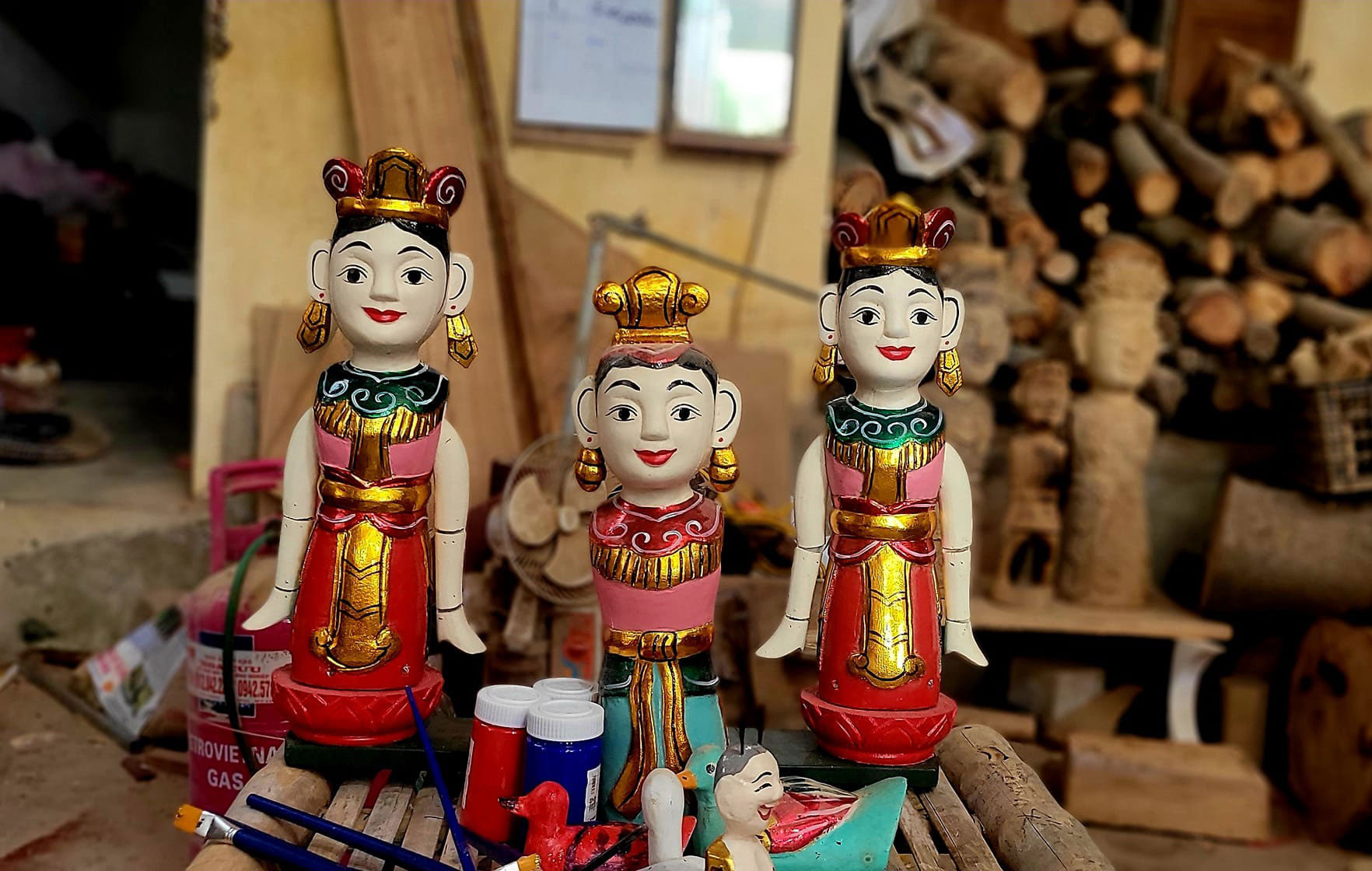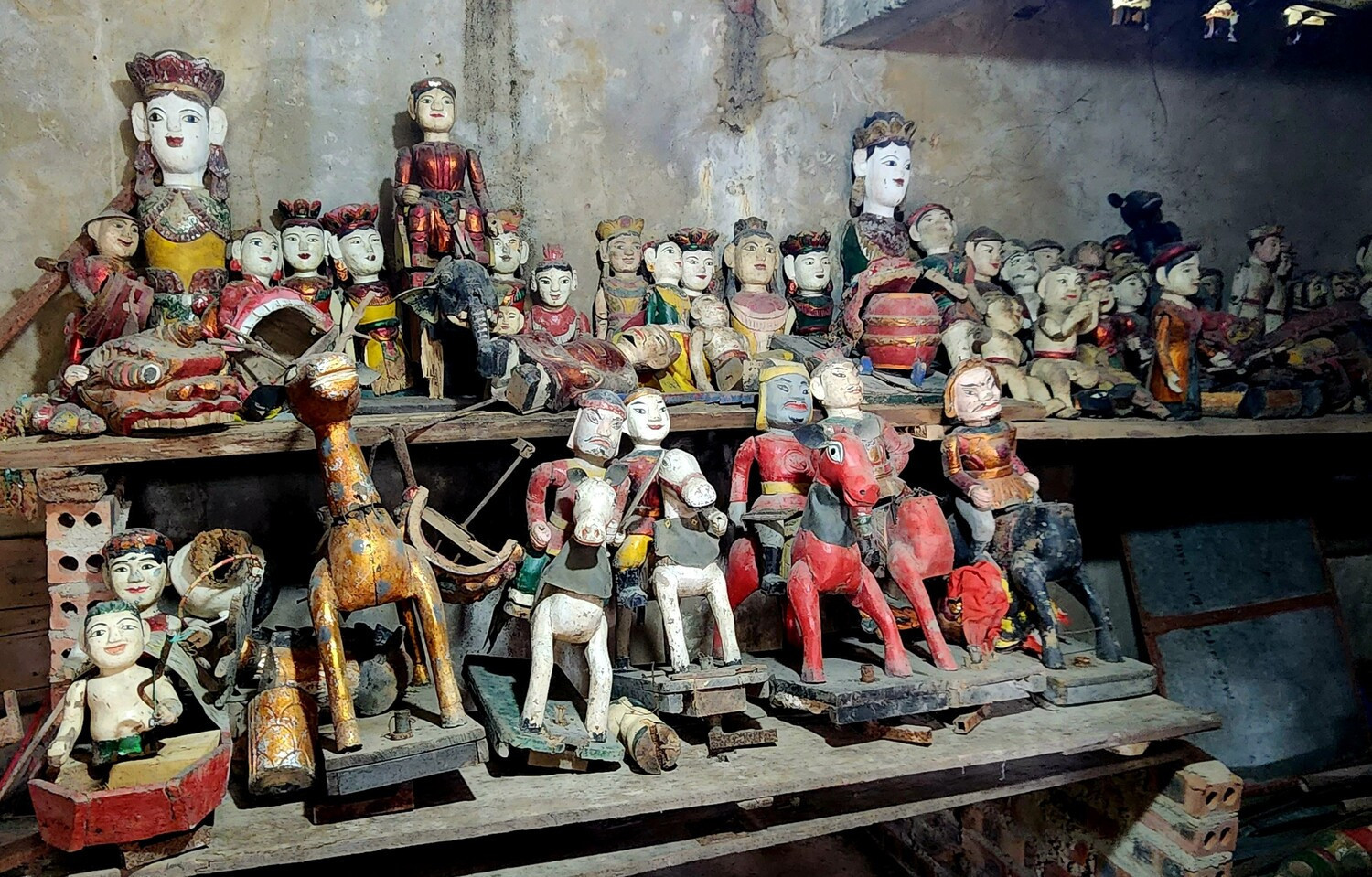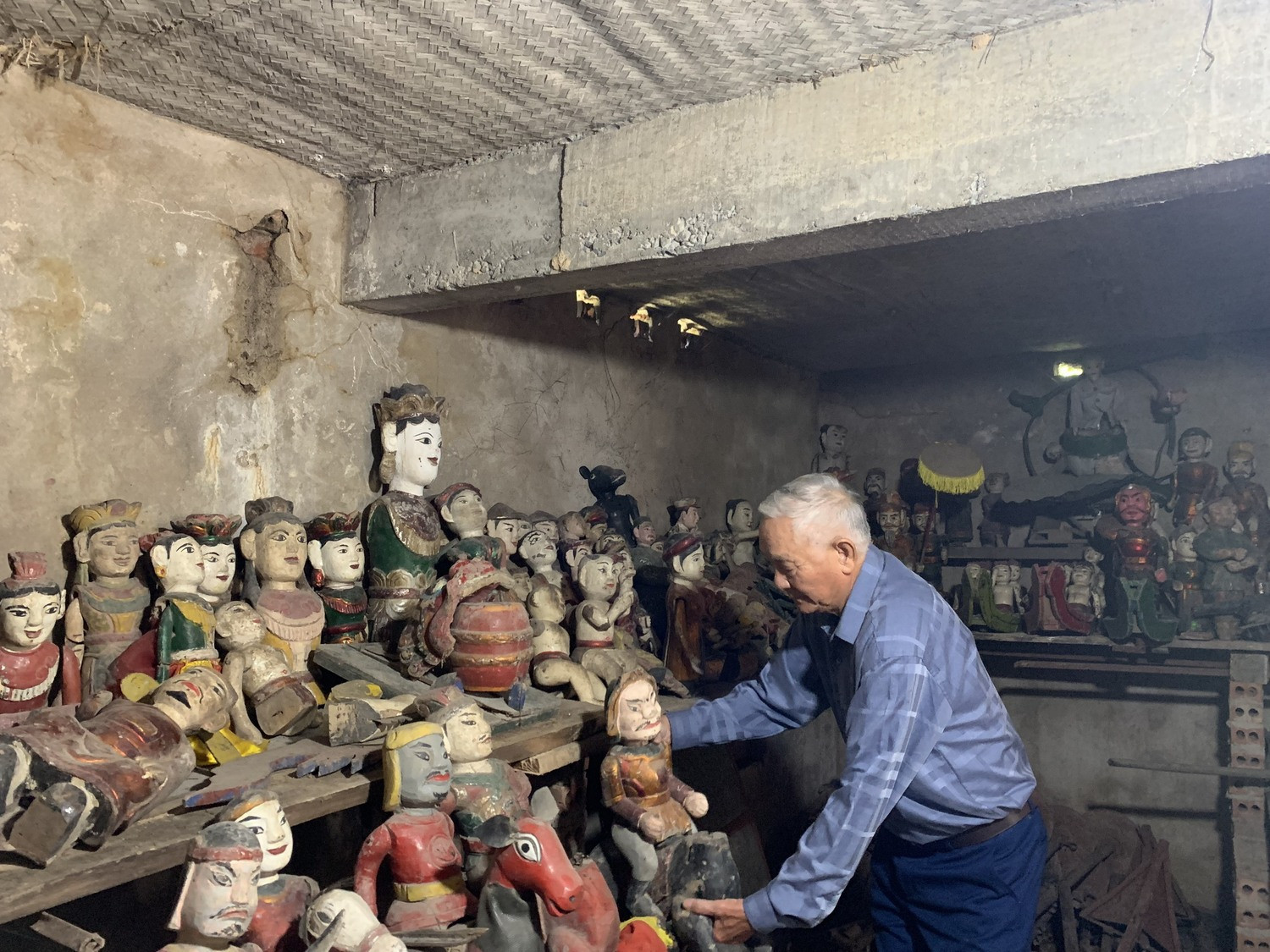Revealing the oldest water puppetry village in the North
Rach village artisans work day and night to carve and create new plays with the belief that they will help the Teu, the Fairy, the Buddha… live forever.

Water puppetry in Rach village (Nam Dinh), along with Nguyen Xa (Dong Hung, Thai Binh), Nhan Hoa (Vinh Bao, Hai Phong) or Dao Thuc (Dong Anh, Hanoi) are villages with long-standing water puppetry troupes in the North.
Rach villagers do not know exactly whether this art form has existed for 300, 500 years or more, but they know that water puppetry has been deeply ingrained in their subconscious, becoming spiritual food from generation to generation.
Every year, on the full moon day of the first lunar month - the anniversary of the first tutelary god, the villagers hold a festival and organize a grand procession, which includes water puppet shows.
Ban Thach village, Hong Quang commune (Nam Truc) is one of the three earliest water puppetry troupes in the North, established around the 16th year of Canh Hung (1755). Through many ups and downs, today, generations of puppeteers from Ban Thach village have turned water puppetry into a "special" art form of their homeland.
Mr. Phan Van Khue, Head of the village's Cultural Committee, said that in the past, the puppet troupe of Rach village often performed at the village pond. The performance room was made of bamboo, the curtain was made of green cloth. In 1987, the village built a water pavilion of more than 2,000 square meters, convenient for performing.
Over time, the water puppetry here seemed to have been lost. However, the strong vitality of this art was once again "reborn" by the people of Rach village with many restored plays such as: buffalo fighting, fishing, swinging, bamboo tube-puppets, duck catching, firecrackers, flag-raising, fairies singing and dancing, Co Doi Thuong Ngan...

With a burning desire to preserve the ancient heritage passed down from his ancestors, artisan Phan Tien Huu, Head of the Ban Thach Water Puppet Troupe, was assigned to look after the ancient puppet warehouse located next to the water pavilion. The warehouse has up to thousands of puppet characters that Mr. Huu can name, describe the story of the play, and even remember the age of each character in it.
He said he did not know the exact number of puppets in the warehouse because there had never been a specific count, and certainly no one dared to "touch" anything here. According to the elders, every time there was a festival, the puppets in the warehouse were brought out to perform outside the water pavilion. Any puppets that were damaged would be repaired, and those that were so damaged by termites that they could not be repaired would be brought to the Thanh Hoang and then burned in a ceremony.
Because of that sacredness, in the shabby, old warehouse roof there are still puppets that are hundreds of years old. Although the paint is faded, many details are chipped and eroded by time, the carved and engraved lines are still extremely soft and delicate...
The puppets are carved with stylized lines, then polished and decorated with different colors of paint to create personality for each character.
Sharing about the puppet making process, artisan Phan Van Mach, the son of a family with many generations of preserving this art, shared that it takes a lot of skills to create a perfect puppet with rich expressive ability. Creating a character is difficult, but to perform a good puppet, one must practice and practice many times to get used to it. Because it has to be performed on the water, the pole or strings cannot be exposed...
Puppet shows are mainly based on folk tales and must be performed as vividly as possible. When the music plays, the puppets’ rhythms must be in perfect sync, without the strings getting stuck or the puppets getting tangled together, otherwise the appeal will be greatly reduced…

Water puppetry is a very hard profession, but according to artist Phan Van Mach, one of the main reasons for pursuing the profession until today is thanks to the laughter of the audience. Thanks to the children who are passionate about preserving the ancient culture of Rach village, water puppetry has gone beyond the bamboo fence of the village and has been invited to perform in many places in the country and internationally such as Japan, France, Sweden, etc.
The whole Rach village currently has 7 households making water puppets. In response to customers' needs and adapting to modern life, along with traditional puppets, households also create new models to supply to the souvenir market.
Mr. Phan Van Trien, 42 years old, owner of a water puppet workshop in Rach hamlet, said: “Currently, each month, my family produces 200 water puppets according to customers’ orders, enough to perform 18 plays. Income from making water puppets is gradually increasing because more and more people know and love the art of water puppetry.”
Rach village artisans are constantly creating new plays and new works, based on fairy tales, so that water puppetry can be more accessible to young people. This is also the way they believe will help the Teu, the Fairy, the Buddha… live forever.
